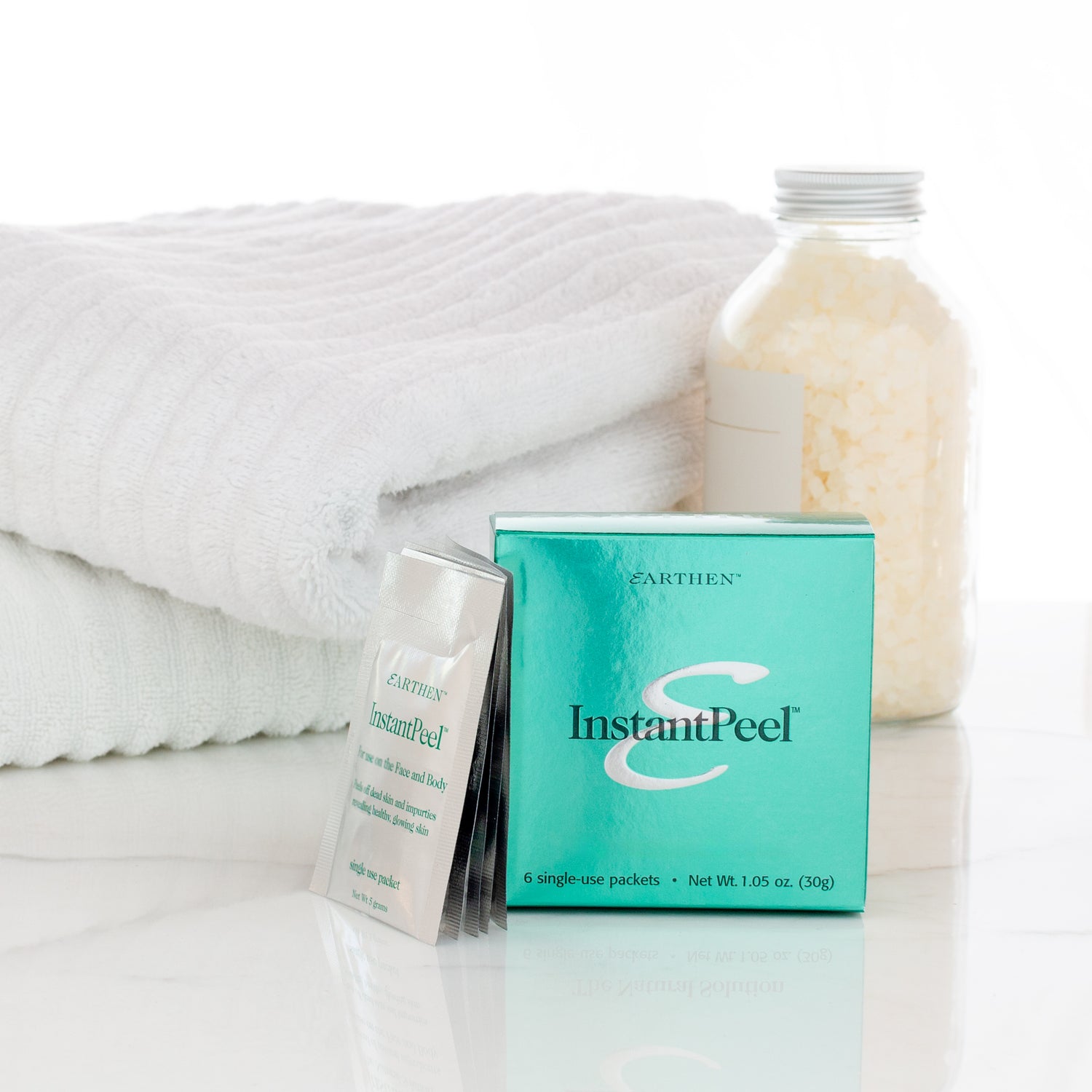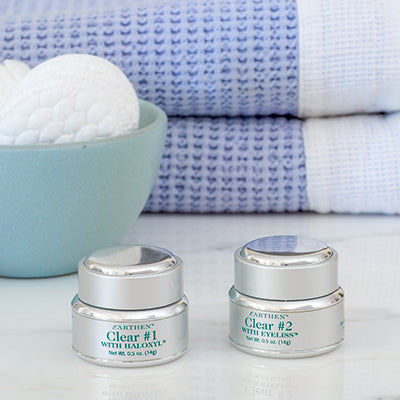You probably have been told over and over that exfoliating is one of the most important steps of any skincare routine. Why? How does it work, and how exactly should you do it? What’s the difference between a chemical and manual exfoliation? How do you know if you’ve exfoliated too much?
The skin is constantly going through cycles of regeneration. Dead skin cells build up on the skin’s surface over time (especially as we age) as new skin cells develop underneath. New skin cells are trapped underneath the old skin clogging pores with oil, dirt, makeup, and other impurities.
When pores are clogged, oil production can go into overdrive, making skin oily and further clogging the pores, which can lead to acne and other blemishes.
Exfoliating the skin helps to remove those dead cells, keeping skin bright, clear, and healthy. When dead cells are removed, the living cells below are also opened up. Moisturizers and other products can then penetrate the skin more deeply and work more effectively.
Now that you know why you should exfoliate, you need to know where it fits into your skincare routine. In the morning, you can exfoliate as your first step. In the evening, however, exfoliate AFTER cleansing. Exfoliating itself is a form of cleansing, an exfoliator works best when used on freshly cleaned skin.
Exfoliating after cleansing (and removing any makeup) will allow the product to better rid your skin of dead skin cells and brighten.
Earthen Skin Care's InstantPeel™ is a skin care product that is a gentle, yet effective exfoliant. After you've been in the shower for five minutes, simply apply InstantPeel™ to your skin and begin gently massaging. InstantPeel™ works to lift and remove the dead skin cells. Bright, radiant skin will emerge.




